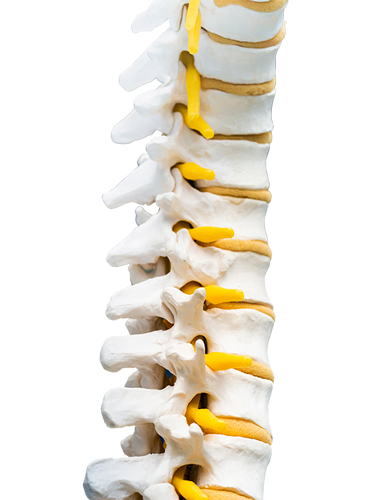Scoliosis is a deformity of the spinal column
Complex three-dimensional deformity of the spinal column with unknown etiology
Scoliosis has structural changes in the three planes of the spine (frontal, sagittal and transverse plane) and may occur in all vertebral segments. Change in the sagittal plane represent the reduction of the physiological thoracic kyphosis which makes the spinal column unstable. Then through the rotation of the vertebtal bodies around longitudinal axis the spinal column is moving in the frontal plane.
cause unknown
IDIOPATHIC SCOLIOSIS
neurological problem
NEUROMUSCULAR SCOLIOSIS
defect present at birth
CONGENITAL SCOLIOSIS
Scoliosis
The word “scoliosis” comes from the Greek for “crooked” (scolios).
There are three types of scoliosis: idiopathic (cause is unknown), neuromuscular (neurological problem) and congenital. Idiopathic scoliosis is the most common, over 80%, where the cause is unknown.
The word scoliosis is often used in practice without first having established with certainty that a person has scoliosis. The safest way to check is to have an X-ray. Over 10 degrees of distortion in the frontal plane is considered a person with scoliosis, anything below 10 degrees represents bad posture.
The period of rapid growth and development represents the most critical period for the onset of scoliosis or for the exacerbation of already formed curvature. During this period, parents should be extra cautious and regularly supervise the child. In some cases during this period, besides exercise it is recommended to wear the brace. Early detection and adequate treatment can prevent the progression of scoliosis.

Children in development
Daily exercises
for scoliosis
In addition to exercising, it is important how you sit, stand or do your homework
